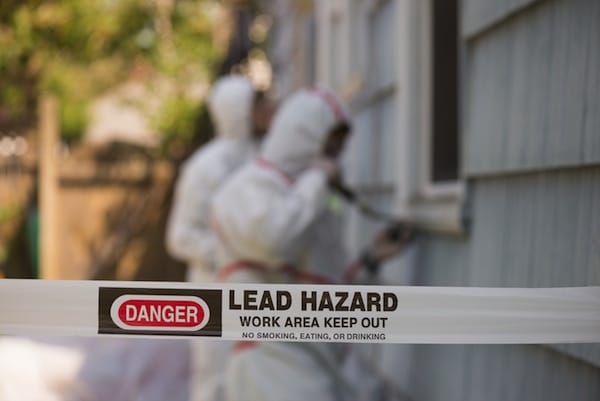By Jay Peters, Principal Advisor, Codes and Standards International
An interesting concept — and most people believe that’s the case — but is it a fact? In reality, the only real test that is effective has proven to be time itself. Many products have been introduced into buildings that were considered to be “the ultimate” building product to replace the old with the latest and greatest. Today, plasticized materials are abundant and steadily injecting themselves throughout the industry. Is this positive or negative? It may depend on the type of plastic and the intended use. History has proven that complacency and blanket acceptance may not be the most prudent decision as the initial short term solution may possesses a long term problem.
Asbestos was one of those very products that replaced alternative building products. Asbestos was touted as the all-around durable and versatile material that could be used in many applications. Asbestos gained widespread acceptance as an insulator and was used in flame and heat retardant coatings, as well as water pipes and pipe insulation, fireproof drywall applications, tile flooring, flue gas vent material and many other applications. It seemed as though there wasn’t a building product that couldn’t be enhanced by asbestos as well as and improve the building functionality and save construction costs. Everyone knows how that story played out. It took a half century to realize that this code approved product had catastrophic consequences when it came to human health and the environment. In the beginning there was opposition, but it met the appropriate code, people became complacent, it became mainstream and in the end, it was deemed to be deadly.
There are many other materials that have similar stories with the same endings. Another memorable example would be lead products. Lead like asbestos, was considered to be the end-all, be-all and was revolutionizing the building industry. It was being used in flashings, solder, roofing materials and plumbing fixtures. Everyone trusted it so much that we were cooking in it and using it to transport our family’s drinking water in water supply piping systems. We painted our babies’ cribs with lead paint and the walls in our homes. When consumers have blind trust in a product or believe an industry’s claims, they often experience harm when those initial claims are ultimately proven to be incorrect. When the promises are unfulfilled or they are misguided they can cause a catastrophic impact. Lead had some opposition from other manufacturers and industry stakeholders in the beginning, but it met the appropriate code, complacency again set in and soon it became mainstream. In the end, it was deemed to be extremely dangerous.
No doubt there will be similar scenarios played out in our future. There are not many materials today that have experienced the same type of dominance that lead and asbestos achieved — except one. Our society has had, and is still having, a major love affair with plastics. Polyvinyl chloride (PVC) has a long and well established foothold in the construction industry. The word “Plastics” conjures up the memories of the classic movie The Graduate where Mr. McGuire says to Ben (Dustin Hoffman) “I just want to say one word to you…just one word. (Ben) Yes sir. (Mr. McGuire) Are you listening? (Ben)Yes sir I am. (Mr. McGuire) PLASTICS — There’s a great future in plastics, will you think about it?”
Polyvinyl Chloride PVC and (ABS) Acrylonitrile butadiene styrene are used in a wide variety of buildings, including homes and commercial buildings. Various forms of plastics are used in a multitude of building products including; piping for water supply, drain, waste and vent pipe, wall panels, faux wood, roofing materials and components, wiring insulation, bathroom fixtures and kitchen counter tops, light switches and wall plates, handles and pulls, doors and insulation, duct work, siding, paint, sealants, window frames, flooring and so much more, all containing plastics, dominate the building component industry. These petrochemical-based materials in use today share a common legacy of emitting toxic chemicals.
Chlorinated plastics have come under more intense scrutiny due to the extreme toxicity of chemicals involved in their production including Dioxins. Dioxins are an unavoidable by-product of the manufacture, combustion and disposal of materials containing chlorine and they are some of the most potent carcinogens known to humankind.
The majority of these plastic building products, if not all, are tested and listed to meet the intent of the codes. But, does this make them safe? It depends on who you ask or what you deem to be safe. Most experts believe that if you merely have casual contact with these products within the building, there will be no long term health problems associated. Others believe they are the next asbestos and lead scenario – ready to be played out on a much wider scale, and similar to the past – only time will tell.
According to the EPA, vinyl chloride is classified as a Group A, human carcinogen. Inhalation is an important route of exposure to hydrogen chloride. Its odor and highly irritating properties generally provide adequate warning for acute, high-level exposures. However, only 50% of exposed persons can perceive hydrogen chloride’s odor at the OSHA permissible exposure limit (5 ppm), and odor may not provide adequate warning in the workplace. Hydrogen chloride vapor is heavier than air and may cause asphyxiation in enclosed, poorly ventilated, or low-lying areas. Children exposed to the same levels of hydrogen chloride as adults may receive larger dose because they have greater lung surface area: body weight ratios and increased minute volumes: weight ratios. In addition, they may be exposed to higher levels than adults in the same location because of their short stature and the higher levels of hydrogen chloride found nearer to the ground1a & 1b.
One very extensive study, The Economics of Phasing Out of PVC was conducted by Frank Ackerman and Rachel Massey. Within the study, it states; “PVC is often advertised as “fire resistant,” meaning that a fairly high temperature is required to start it burning. However, PVC starts to smolder and release toxic fumes such as hydrogen chloride (HCl) at a lower temperature, long before it ignites. If PVC is gradually warmed, more than half of its weight is given off as fumes before it gets hot enough to burst into flames. The hydrogen chloride (HCl) gas released by burning PVC is potentially lethal to people caught in a burning building; other products of PVC combustion, such as dioxin, exert their health effects more slowly and are spread across a larger population. In case of fire, vinyl building products begin to smolder long before they burn, releasing toxic fumes of hydrogen chloride (HCl), and thereby threatening building occupants and firefighters. For this reason, the International Association of Firefighters supports efforts to reduce PVC use2. “
It is impossible to know in advance exactly what material is the next to cause unprecedented Asbestos/Lead-like construction industry turmoil. There is only one at the moment that is a dominant material, that’s taking the industry by storm – plastics. It is important that we learn from past mistakes and take into consideration all aspects of a product before it’s widely accepted. History has clearly demonstrated that when 1) manufacturers try to cram the material into every aspect of our lives, 2) society becomes complacent, and 3) the industry just accepts it because it simply meets the code – that this type of scenario can ultimately be a recipe for disaster.
Much more to come on this interesting and, often controversial subject!
1. a. United States Environmental Protection Agency (EPA) – Air Toxics/Hydrochloric Acid https://www3.epa.gov/airtoxics/hlthef/hydrochl.html
b. Agency for Toxic Substances & Disease Registry – Toxic Substances Hydrogen Chloride http://www.atsdr.cdc.gov/mmg/mmg.asp?id=758&tid=147
2. The Economics of Phasing Out PVC – Global Development and Environment Institute Tufts University Rev May 2006
 For more than 35 years, Peters has been active in the plumbing and mechanical trades as a journeyman, contractor, instructor and senior staff for ICC and IAPMO. His firm, Codes and Standards International, represents manufacturers and industry stakeholders at technical codes and standards meetings, regulatory and legislative hearings and navigating through product testing, listing and certification processes at IAPMO, ICC, NSF, UL and more. He can be reached directly at jay@BuildingCodesAndStandards.com
For more than 35 years, Peters has been active in the plumbing and mechanical trades as a journeyman, contractor, instructor and senior staff for ICC and IAPMO. His firm, Codes and Standards International, represents manufacturers and industry stakeholders at technical codes and standards meetings, regulatory and legislative hearings and navigating through product testing, listing and certification processes at IAPMO, ICC, NSF, UL and more. He can be reached directly at jay@BuildingCodesAndStandards.com






Join the conversation: